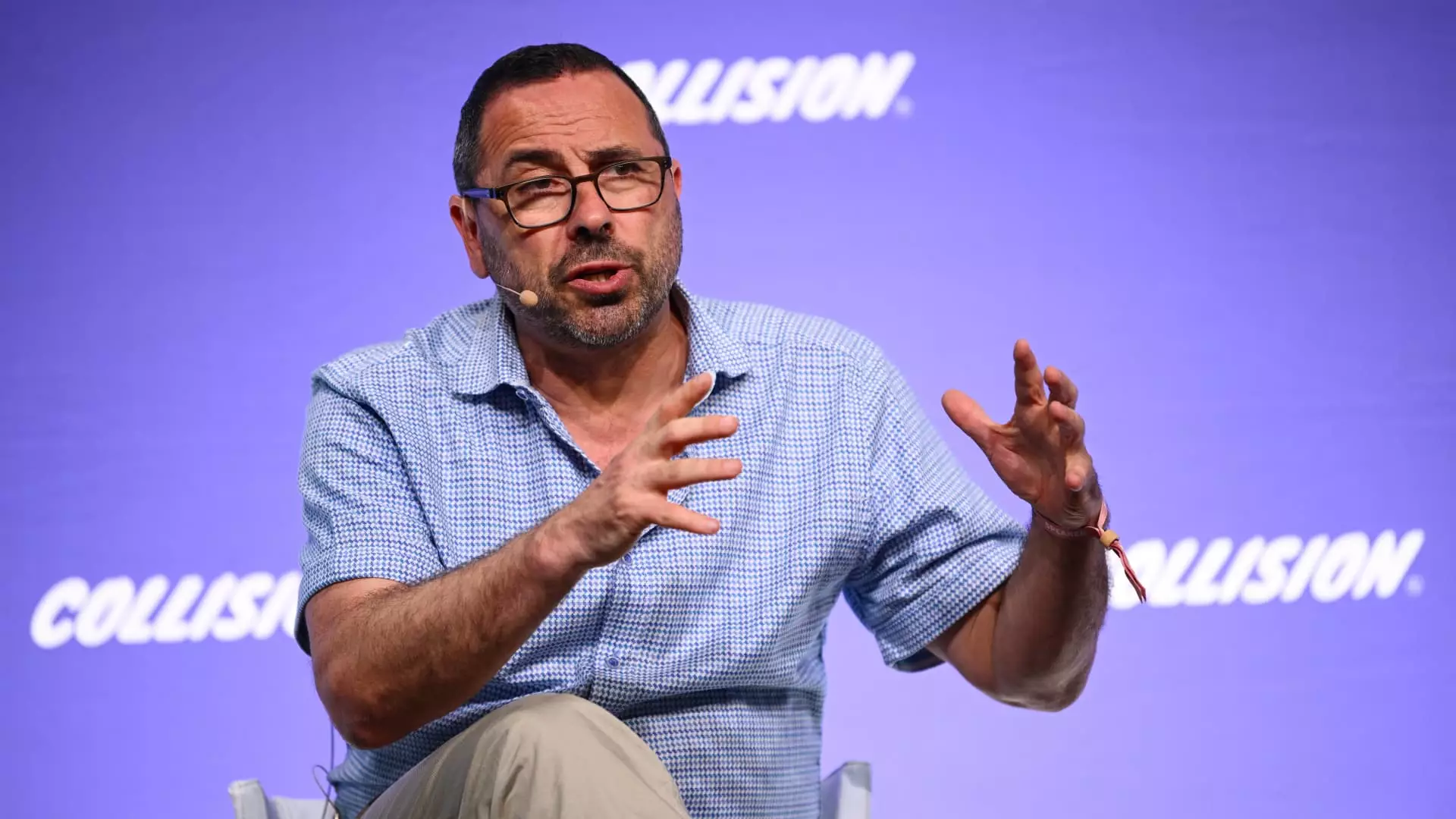Cerebras Systems, a leading player in the AI chip manufacturing sector, stands at a pivotal moment in its journey, seeking to capitalize on the surging demand for AI technologies. With aspirations to be the first major venture-backed tech company to make its public debut in the U.S. since April, Cerebras is trying to ride the momentum created by Nvidia, now a titan in the tech world valued at a staggering $3.3 trillion. However, the path to a successful IPO is fraught with significant challenges, particularly its reliance on a single customer which constrains its growth potential and stability in an increasingly competitive environment.
Founded in 2016 and based in Sunnyvale, California, Cerebras made headlines with the introduction of its cutting-edge processor three years later. The company claims that its technology has outmatched Nvidia’s GPUs, particularly when it comes to training complex language models. Recently, Cerebras reported a remarkable increase in sales, with figures tripling to $78.7 million in 2023 and further climbing to $136.4 million in the first half of 2024. It appears poised for rapid expansion, underlined by $1.43 billion in signed agreements with prepayment expected by March 2025.
Cerebras’ ambition to double its valuation to approximately $8 billion in its upcoming IPO reflects the positive outlook surrounding its capabilities. The fervor over AI advancements is palpable, and with Nvidia at the forefront of this revolution, Cerebras aims to attract significant investor interest. However, the company’s financial model reveals a concerning reliance on one primary customer, G42, a firm based in Abu Dhabi that has accounted for an overwhelming 87% of its revenue. This customer concentration poses a danger; should G42’s business interests wane or shift, Cerebras could find itself in a precarious position.
G42, backed by industry giant Microsoft, is not only a significant source of revenue for Cerebras but also a critical investor as it seeks to deepen its stake in the company. The implications of such heavy reliance are multifaceted. While G42’s purchase commitment of $1.43 billion represents a significant endorsement of Cerebras’ technology, it also raises concerns about sustainability and vulnerability to external market forces. Furthermore, the scrutiny of foreign investments by the Committee on Foreign Investment in the United States (CFIUS) adds another layer of complexity. Investors must consider the ramifications if CFIUS denies or delays approval for G42 to increase its ownership stake.
This dependency on a single entity could stymie Cerebras’ ability to diversify its customer base, a crucial factor for long-term viability. Although Cerebras has expressed intentions to expand into healthcare and biotechnology sectors, its lack of a diversified revenue stream could deter potential investors wary of high-risk propositions.
Cerebras is navigating a challenging IPO landscape, characterized by investor hesitance and the absence of major tech banks like Goldman Sachs and Morgan Stanley, which traditionally dominate IPO underwriting. The company is currently working with Citigroup and Barclays, but the latter’s less reputable position in high-stakes tech IPOs may further complicate investor confidence. The potential for national security concerns surrounding its ties to G42 amplify skepticism, particularly amidst rising geopolitical tensions.
The historical context is also essential; smaller tech firms have faced suppressed valuations and difficulties securing favorable IPO terms over the past two years. With Wall Street banks gravitating towards other AI investments, such as OpenAI, Cerebras may struggle to attract attention in a crowded marketplace. Investor confidence appears tenuous, and the lack of a robust backing from top-tier investment banks could hinder its IPO prospects.
Despite these challenges, Cerebras could still find a path to a successful IPO due to the overall excitement surrounding AI technologies. The burgeoning demand for AI chips, especially in light of Nvidia’s dominance in the market, could position Cerebras favorably for potential investors. However, the company must address its customer concentration issue and actively pursue a diverse audience to guard against financial setbacks. Insights from public statements by investors indicate that many see promise in Cerebras’ technology, which is considered capable of surpassing Nvidia’s offerings.
Nonetheless, investor enthusiasm will need to be tempered with caution. Concerns over leadership, past infractions, and financial sustainability could weigh down Cerebras’ potential recovery in the public eye. With a need for strategic foresight and expansion beyond a sole revenue source, Cerebras’ journey to the public markets will undoubtedly be closely watched and scrutinized as it strives for a successful entry into the limelight.

